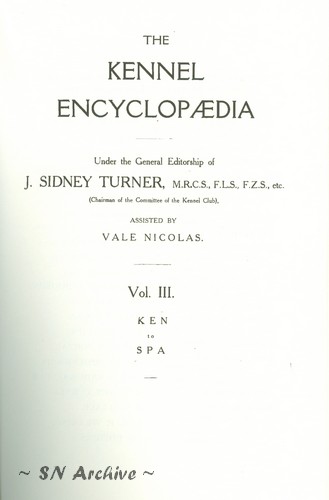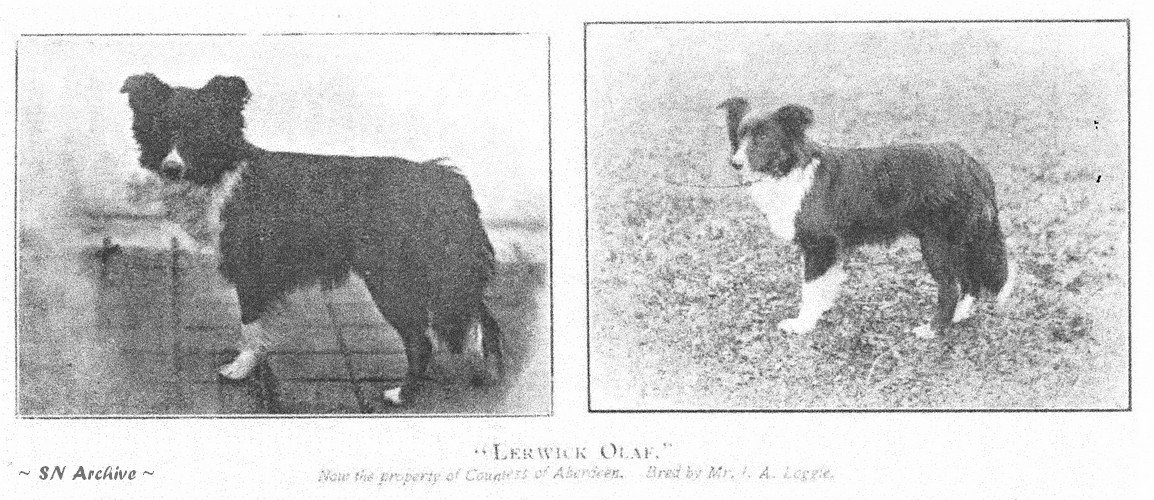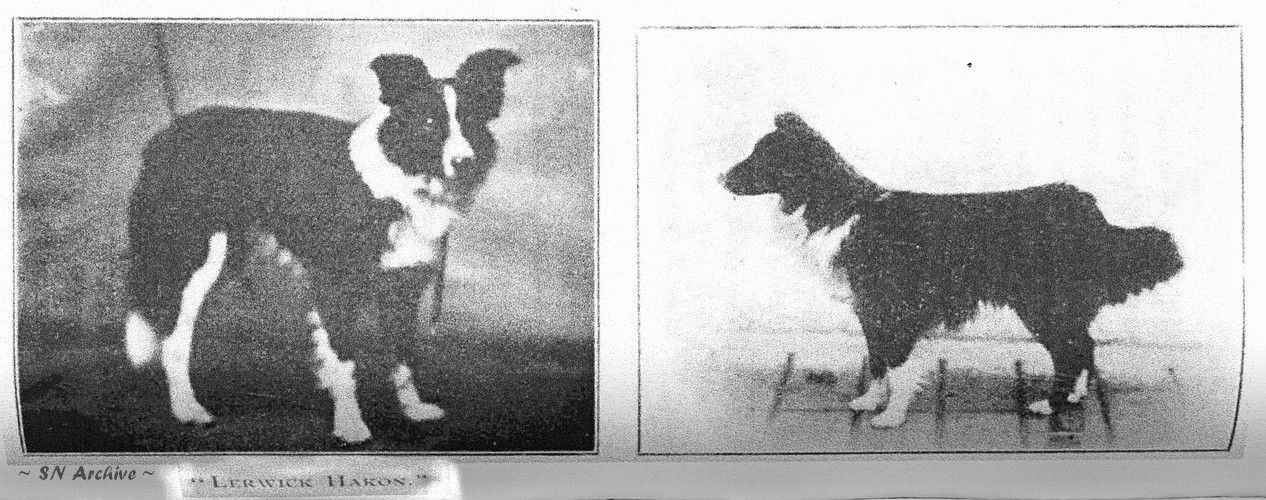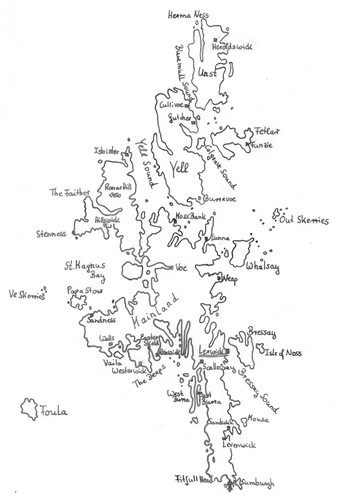 |
The Kennel Encyclopaedia - Volume III - KEN to SPA J. Sidney Turner, M.R.C.S., F.L.S., F.Z.S., etc., Sir W.C. Leng & Co., GB, 1910 (reprint 2010) |
The Sheltie is described in 3 1/2 pages by breed pioneer James A. Loggie. The four photos show his two males Lerwick Olaf and Lerwick Hakon. This "old" standard work is now also available as a reprint.
Page 1249: "SHETLAND SHEEPDOGS
THAT the 'Shetland Sheepdog' is a distinct breed of dog noone can deny. It was originally known as the 'Shetland Collie' or 'Toonie Dog'. The dog took its title from the fact of its being used to drive the sheep off the township, croft, or what is known in Shetland as the 'Toon'. Many years ago, when large sheep farms were established in Shetland, shepherds from the mainland brought with them Scotch Collies and gave the progeny to the crofters; but in-breeding and the want of keeping up fresh blood soon caused the breed to become diminutive. Few people (who have not visited Shetland) are aware of the conditions of these crofts; very few of them have fences or dykes to protect their crops, or to divide the arable land from the hill pasture; and in seasons when the hills are scarce of pasturage, the sheep come down and feed off the stacks of hay and corn in the stackyard, and also eat the turnips and cabbage growing around the house. When this occurs the dog has a duty to perform, and is used to drive the sheep back to the hills, and need not be accompanied by its master when once it gets the order to go. When the dipping seasons come round, the owners of sheep on the hill scattald meet on a given date with their dogs and combine to drive the sheep to the dipping places appointed. This is known locally as 'caaing' or 'driving'.
The Shetland sheep, although small, are very wild, and they require a good deal of handling to bring them together. They are very agile, and a five-foot wall does not deter them from getting out, if they want to.
The Shetland crofter grudges keeping a large dog, principally on account of the food it requires, while the smaller one suits his purpose.
Years ago, when Greenland whalers called at Shetland on their way home to land the men belonging to those Islands who formed part of their crews, brought with them what was known as the 'Yakki' dog, called after the natives of Greenland, who are known among whalers as the Yaks. Distinct traces of this dog (which was found very useful by the crofters) are still to be found among the Island dogs.
These Yakki dogs were bred with the Shetland dogs, and some of the strongest characteristics of the breed are often seen in the present day Shetland dog, namely, the black muzzle, large prick ears, and heavy brush of a tail, combined with a somewhat foxy appearance. The height of these dogs is usually from 14 to 17 inches; but fashion, as in several other breeds, nowadays demands that these dogs should be bred smaller. This undoubtedly can be done; but, like the building of Rome, cannot be expected in a day. In consequence of this desire of smallness, alien blood has been introduced, and with very unsatisfactory results, which have brought discredit to the native dogs. Fortunately, by the formation of two Specialist Clubs the interests of the breed are now being more carefully looked after. In breeding type is of the utmost importance, and Collie character must be most carefully kept in view. Meantime, the best and most typical specimens exceed the standard of height which is being tried for; but once type is proper fixed, height and weight may be arrived at. The colours usually met with are Black and White, Black and Tan, Black-Tan and White, Black, Sable, and Sable and White. They are very affectionate and faithful, and no kinder or more lovable dogs exist. They attach themselves readily to children, and are never treacherous. They require very little food and attention. They are very hardy, and can live in outdoor kennels when required to. They are not very prolific, having generally litters of about three or four; strange to say, female invariably predominate, being generally two to one. They are very fleet, and can stand a hard day's running well. In 1908 the Shetland Sheepdog Club was formed, followed by the Scottish Shetland Sheepdog Club in 1909. The combined membership is about 150. In 1909 The Kennel Club agreed to recognise the breed, and registered the titles of both Clubs.


The Shetland Sheepdog Club standard of height was about 12 inches, and weight 14lbs, while the Scottish Shetland Sheepdog Club's standard of height was the same, but that of weight was 12 lbs.
Since the formation of these Clubs the breed has been largely taken up, and classes have been given at many of the principal shows, which have been well supported.
The Clubs have done a great deal of popularise the breed and to stamp out alien blood. Any dog showing signs of Spaniel blood should be carefully barred.
The Shetland sheep is a very small animal, only about half the size of the Scotch black-faced sheep. It is not, therefore, necessary to have so large a dog to herd and keep them in bounds as is required in the Highlands. The Shetland Sheepdog is purely a crofter's dog, and those who own from ten to thirty Shetland sheep will not have any other. Those shepherds, however, who have from three to seven hundred black-faced ewes have larger dogs.
JAMES A. LOGGIE."
If you discover any errors in the text that may have been caused by the transcription, please let us know for a prompt correction.

